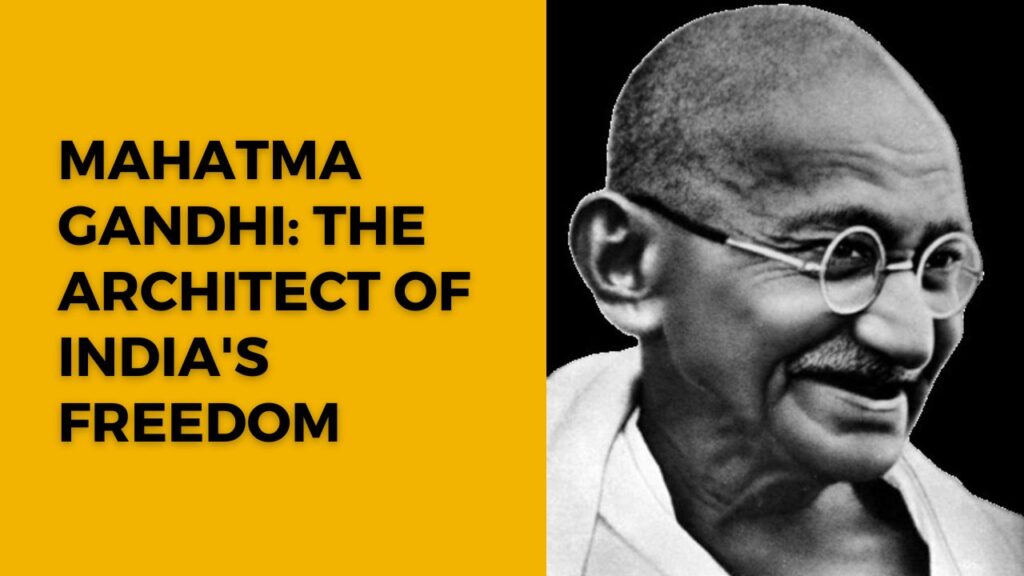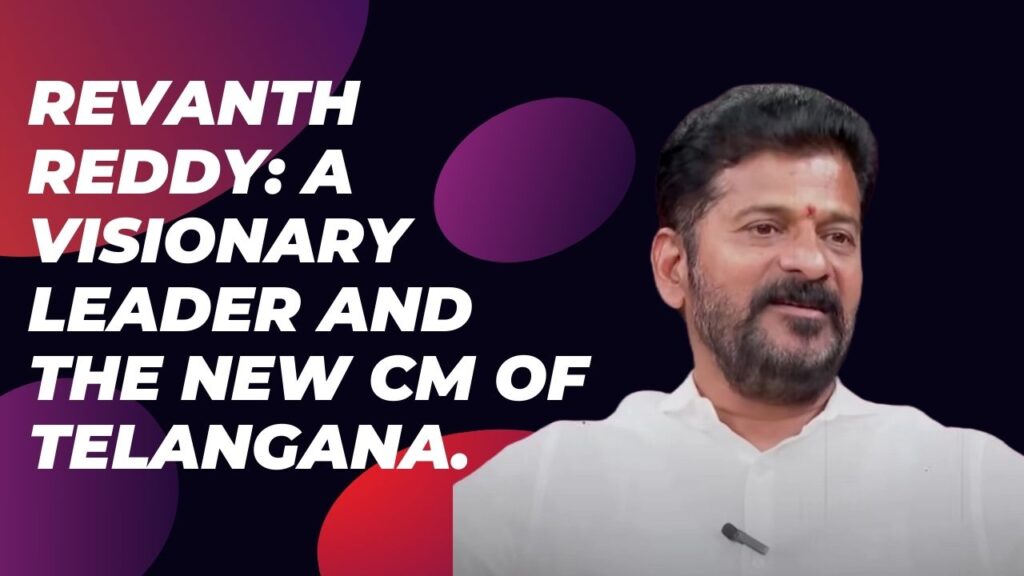Introduction to Mahatma Gandhi.
Today, we shall know more about the life of Mahatma Gandhi. His principles of non-violence and civil disobedience played a pivotal role in India’s fight for independence. This blog post focuses on some of the fascinating facets of his life, from his early days to becoming the “Father of the Nation,” leaving an important mark on the pages of India’s freedom struggle.

Description about Mahatma Gandhi:
Mahatma Gandhi, born in Porbandar, Gujarat, was a lawyer, philosopher, and political leader. He went on to become the forefront figure in India’s freedom struggle against British colonial rule. His philosophy of non-violence or “Ahimsa” became the stepping stone of India’s freedom movement. This inspired millions to join the fight for independence. His iconic salt march protesting the British salt tax, became a symbol of resistance and marked a turning point in India’s quest for complete independence. A practitioner of simple living, he led by example, weaving his own clothes and advocating for self-sufficiency. Despite facing imprisonment multiple times, he remained steadfast in his commitment to non-violence and justice, leaving a legacy that extends even beyond India’s borders.
Happiness is when what you think, what you say, and what you do are in harmony.
– Mahatma Gandhi
FAQs about Mahatma Gandhi:
When and where was Mahatma Gandhi born?
Mahatma Gandhi was born on October 2, 1869, in the coastal town of Porbandar, Gujarat, India.
What does the title “Mahatma” mean?
“Mahatma” translates to “Great Soul” in Sanskrit and symbolizes his revered status as a spiritual and political leader.
How did he contribute to India’s independence?
He led various peaceful movements, including the Salt March and Quit India Movement, which pressurized the British rulers and brought India’s freedom revolutionaries together.
What role did he play in the Indian National Congress?
He became a prominent leader in the Indian National Congress and used it as a platform to advocate for India’s independence.
Where did he study law?
He studied law at University College London and later at Inner Temple in London.
Who were his parents?
His parents were Karamchand Gandhi and Putlibai Gandhi.
What were his children’s names?
He had four children named Harilal, Manilal, Ramdas, and Devdas.
Early Education, Profession And Time In South Africa.
Where did he receive his early education?
He studied in Porbandar and later at Alfred High School in Rajkot, Gujarat.
Did he go to college?
He studied law at University College London but left without completing his degree.
What was his profession before entering politics?
He practiced law in South Africa before actively participating in Indian politics.
Why did he go to South Africa?
He went to South Africa in 1893 and worked as a lawyer. Later, he became involved in the civil rights movement and the Indian independence struggle.
What major movement did he lead in South Africa?
He led the Indian community in South Africa in the resistance against discriminatory laws of the British rulers.
When did he return to India permanently?
He returned to India in 1915 after spending two decades in South Africa.
What role did he play in India’s struggle for independence?
He led various non-violent movements, advocating for India’s independence from British rule.
Can you name some of the major movements led by Mahatma Gandhi in India?
Notable movements include the Non-Cooperation Movement, Civil Disobedience Movement, Quit India Movement, and the Salt March.
What was the significance of the Salt March?
The Salt March, initiated in 1930, protested the British salt tax and became a symbol of nonviolent resistance.
Did he spend time in prison during the freedom struggle?
He was imprisoned multiple times for his role in various protests and movements.
What was his philosophy of non-violence known as?
His philosophy of non-violence is known as “Ahimsa.”
What did he mean by “Satyagraha”?
“Satyagraha” is a term coined by Mahatma Gandhi, meaning the pursuit of truth and nonviolent resistance.
Indian National Congress, Recognition And Activism.
How did he influence the Indian National Congress?
He became a key leader in the Indian National Congress, shaping its policies and advocating for Indian independence.
When did he participate in the Round Table Conferences in England?
He participated in the Round Table Conferences in London in 1930, 1931, and 1932 to discuss constitutional reforms for India.
What awards and honors did he receive in 1930?
He was named Time Magazine’s Person of the Year in 1930.
What title did Rabindranath Tagore give to him?
Rabindranath Tagore referred to Gandhi as “Mahatma,” meaning “Great Soul.”
How did he contribute to the Harijan movement?
He initiated the Harijan Movement to uplift the socially marginalized communities, primarily the Dalits, through social reforms.
Did he fast during his activism?
He undertook several fasts for communal harmony, protest against untouchability, and promoting non-violence.
What role did he play in the Champaran and Kheda movements?
He led farmers in the Champaran and Kheda regions against oppressive indigo planters and unfair taxation.
Did he support the industrialization of India?
He was skeptical of rapid industrialization and preferred self-sufficiency through cottage industries for economic independence.
How did he contribute to the Indian textile industry?
He promoted usage of hand-spun and hand-woven cloth, encouraging the use of the spinning wheel or “charkha” for local producers.
Views on Social Evils, Religious Harmony, Last Years Of His Life.
What were his views on untouchability?
He opposed untouchability and worked towards the eradication of this social evil.
What were his views on religious harmony?
He advocated for religious harmony and strived for coexistence of all religions and communal unity.
How did he view the role of women in the independence movement?
He encouraged women to participate in the independence movement and advocated for their rights.
What was his approach to resolving conflicts between Hindus and Muslims?
He promoted communal harmony and undertook fasts to quell communal violence, advocating for unity between Hindus and Muslims.
How did he contribute to the rehabilitation of those affected by the partition?
He worked towards the relief and rehabilitation of refugees affected by the partition, promoting peace and harmony.
What was the Quit India Movement, and what role did he play in it?
The Quit India Movement was a mass protest against British rule in 1942. He played a leading role and demanded an end to British colonialism.
Where did he spend the last years of his life?
He spent his last years at Birla House in New Delhi.
When and how did he pass away?
Mahatma Gandhi was assassinated on January 30, 1948, by Nathuram Godse in New Delhi.
Legacy And Impact On Other World Leaders.
What impact did his death have on the world?
His death had a major impact globally. It inspired movements for civil rights, peace, and justice as a remembrance of his work.
How is he remembered in modern India?
He is revered as the “Father of the Nation” in India.
What institutions and memorials honor Mahatma Gandhi’s legacy?
Institutions like the Sabarmati Ashram and memorials like Raj Ghat in Delhi commemorate his life and teachings.
How did he influence other global leaders?
His philosophy of non-violence influenced leaders like Martin Luther King Jr, Nelson Mandela and Cesar Chavez in their struggles.
What annual event in India commemorates Mahatma Gandhi’s birthday?
Gandhi Jayanti on October 2nd is celebrated annually in India to honor Mahatma Gandhi’s birthday as a national holiday.
Conclusion:
In conclusion, Mahatma Gandhi’s life was full of struggles, sacrifice, and unwavering dedication to the principles of non-violence and truth. His contributions to India’s independence and advocacy for social justice have left a lasting imprint on the world. As we reflect on his life, we continue to find inspiration in the values that Mahatma Gandhi promoted and passed on to humanity. These ideals continue to urge us to strive for a world guided by peace, equality, and justice. Dear Readers, you may read some of our other articles from the “Home” page on our website.


